Daytime high temperatures in the first half of June in Middlebury are historically in the 70s F, but so far this year half of the days in June have been in the 80s F. Historically in June, Burlington gets 2.5 inches of rain by the 20th, but so far has gotten only 0.4 inches (last year they got 3.8 inches by now). So maybe I should not have been so surprised on Friday to find that our vernal pool was completely dry. Ned and I visited to collect data from the loggers and install a new version of the DIY water depth and water temperature logger. The new logger might not have much work to do for a while.

As we approached the vernal pool, I could smell it before I saw it, and something was fishy. I would not have known we had arrived at the pool had there not been two plastic jugs (the DIY data loggers) on a wooden stake in the middle of the clearing. The ground was covered with mostly dry leaves, and royal fern was 18 inches tall in places. This was our vernal pool, except for the pool part, and with added carnage.
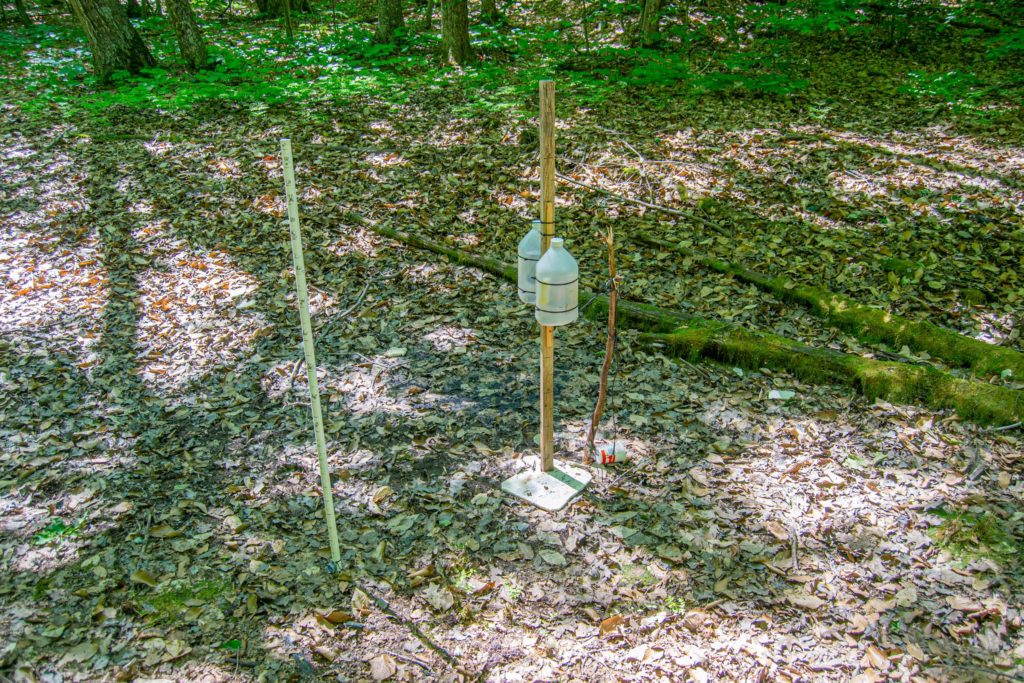
There were still-damp egg masses of spotted salamanders scattered among the leaves. At the lowest place in the pool basin, a few feet from the DIY logger stake, was a dark stain. This had been the last puddle and the last refuge for thousands of wood frog tadpoles.
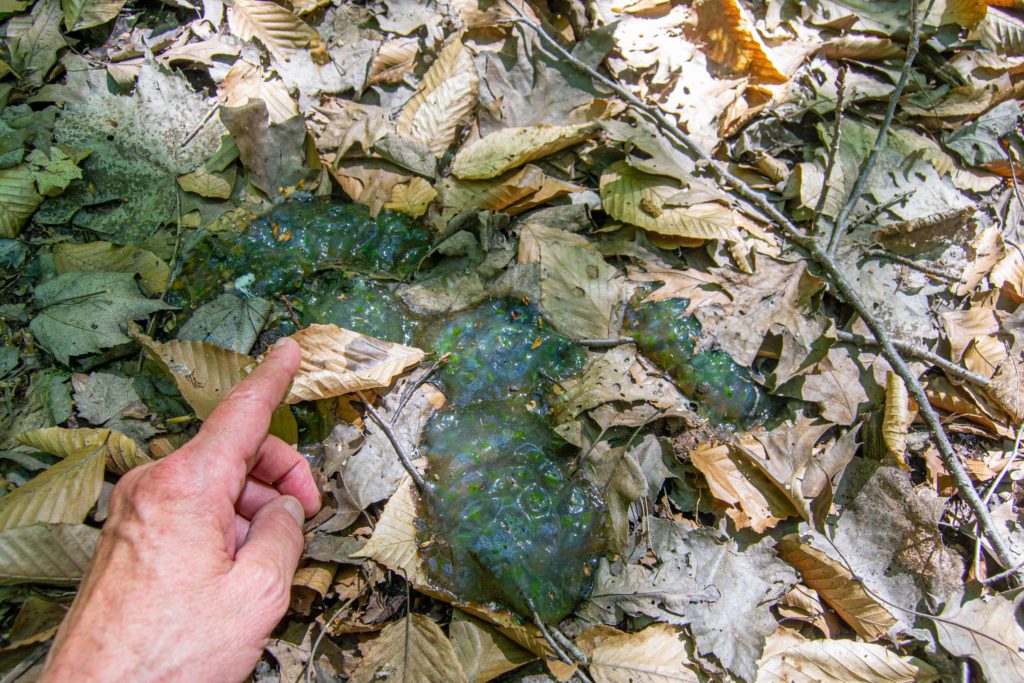
The egg masses might have contributed to the bad smell, but I think most of it came from the rotting tadpoles. Flies were busy at that spot, and poking the masses of tadpoles exposed tiny maggots.

I didn’t see anything that looked much like a salamander larva. Many of the dead tadpoles had the characteristic spiral gut of frog tadpoles. But most were decomposed enough that identification was difficult. The tadpoles were about 1 to 2 cm long and no legs were present.
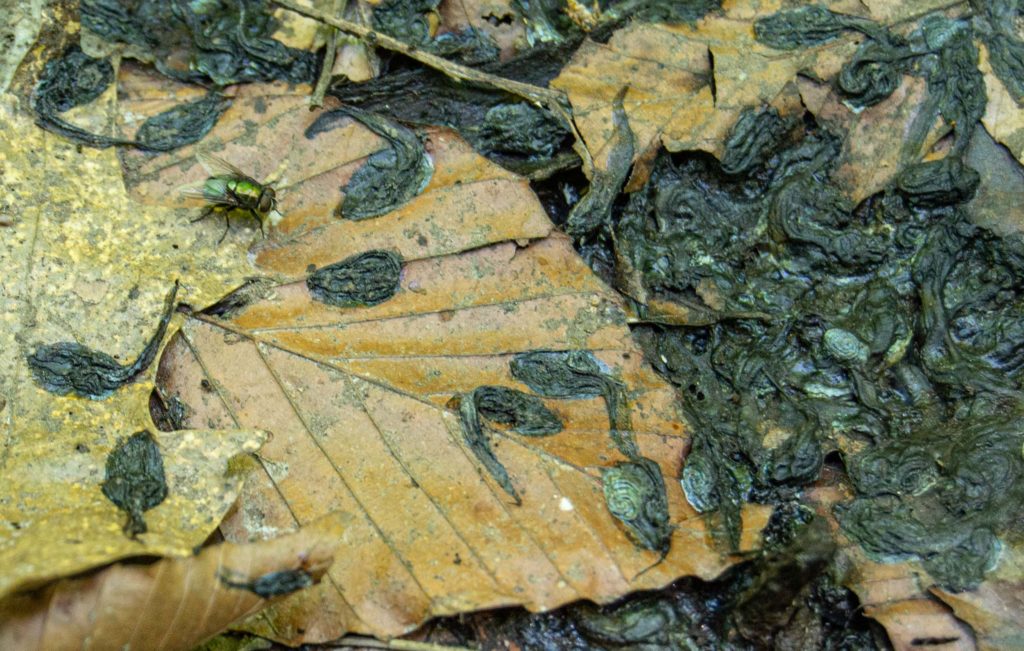
The corpses and the mud under the leaves were still wet so it had not been long since the pool went dry. The data from the temperature loggers provide good evidence that the tadpoles were probably still alive four days earlier.
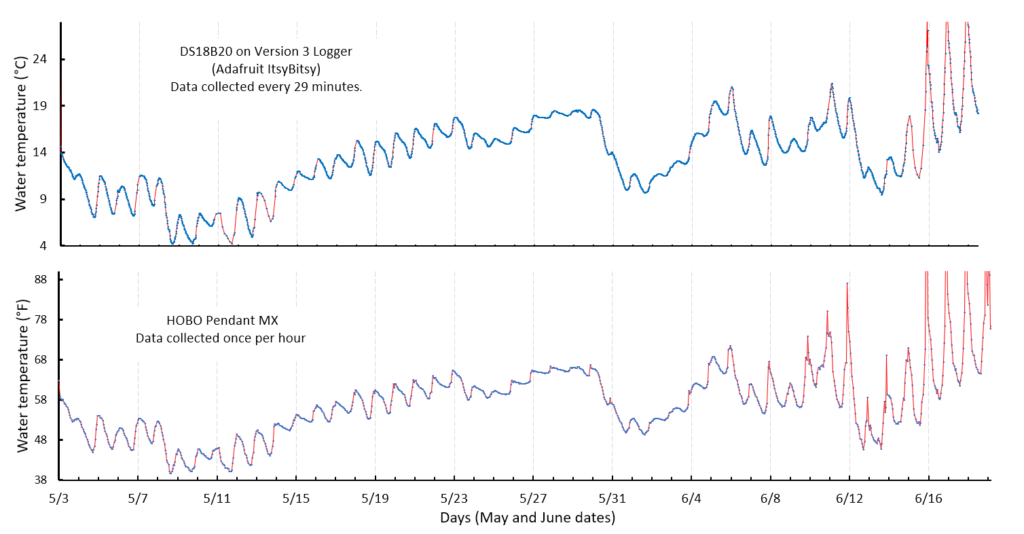
Figure 6. Water temperature of the vernal pool between May 3 and June 19, 2020. The record from the DIY data logger (upper) matches well with the record from the HOBO data logger (lower). The HOBO logger was about an inch higher than the DIY logger and became exposed to the air several days earlier (June 10-12) than the DIY logger (June 15-16). The start of sharp temperature spikes and bigger differences between day and night temperatures indicates when the sensors first became exposed to air. On June 15, there were probably thousands of tadpoles still alive in a tiny puddle a few feet from the logger stake. By June 17 their ordeal was probably over. Click to embiggen.
There were two DIY loggers deployed at the vernal pool for the past six weeks. The Version 3 logger (Adafruit ItsyBitsy) recorded data the entire time, but the Version 2 logger (Adafruit Feather) ran out of battery on May 30 and failed to collect good data on some days before then. The Version 3 logger recorded good water depth data until June 6. That is probably when the floating Styrofoam target was destroyed. The surviving target for the other (Feather) logger had two large claw marks in it where something the size of a raccoon had walked across it. It might have been the same varmint that broke the other target into seven pieces. So we did not get good water depth data for the last days of the pool drying out. The temperature sensors sitting on the bottom of the pool provided the best information about the disappearance of standing water.
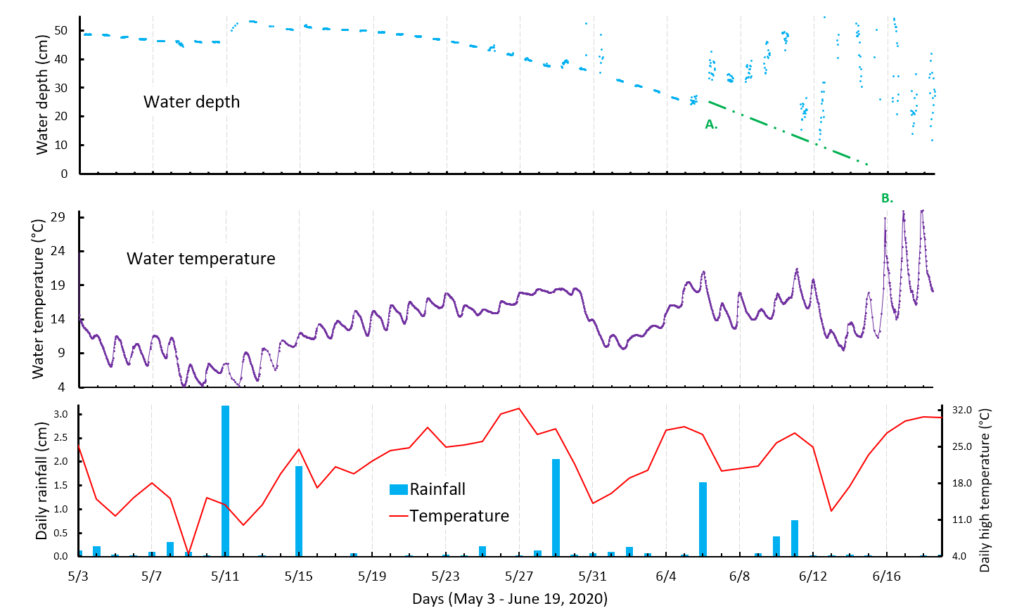
It appears that 2020 was not a good year for amphibians at this vernal pool. The pool dried up about two months after wood frogs arrived and started breeding around April 13. The size and form of the dead tadpoles suggest that they were not close to metamorphosis, so there were probably no successful escapes from the pool. Of course, if some frogs escaped, I would have found no evidence of that. I think spotted salamanders are unlikely to go from egg to terrestrial adult in only two months, so there was probably no salamander reproduction at the pool this year.

Below normal rainfall in May and early June and three very warm stretches in late May and June contributed to the breeding failure at this pool. Rainfall events in late May and June did little to raise the water level in the pool. That is probably because, unlike the rains of April and early May, these fell on a drying watershed supporting trees at the peak of their need for water. I hope we don’t have too many consecutive years like this.

Assuming some rain happens this summer maybe the Version 4 data logger will have a chance to demonstrate that it takes only $17 to get good data about vernal pool dynamics. By next summer this or some newer version might be able to nail down when the pool dries up. Or with luck, there will be enough rain that it will never dry up and thousands of new frogs and salamanders will have their day.
